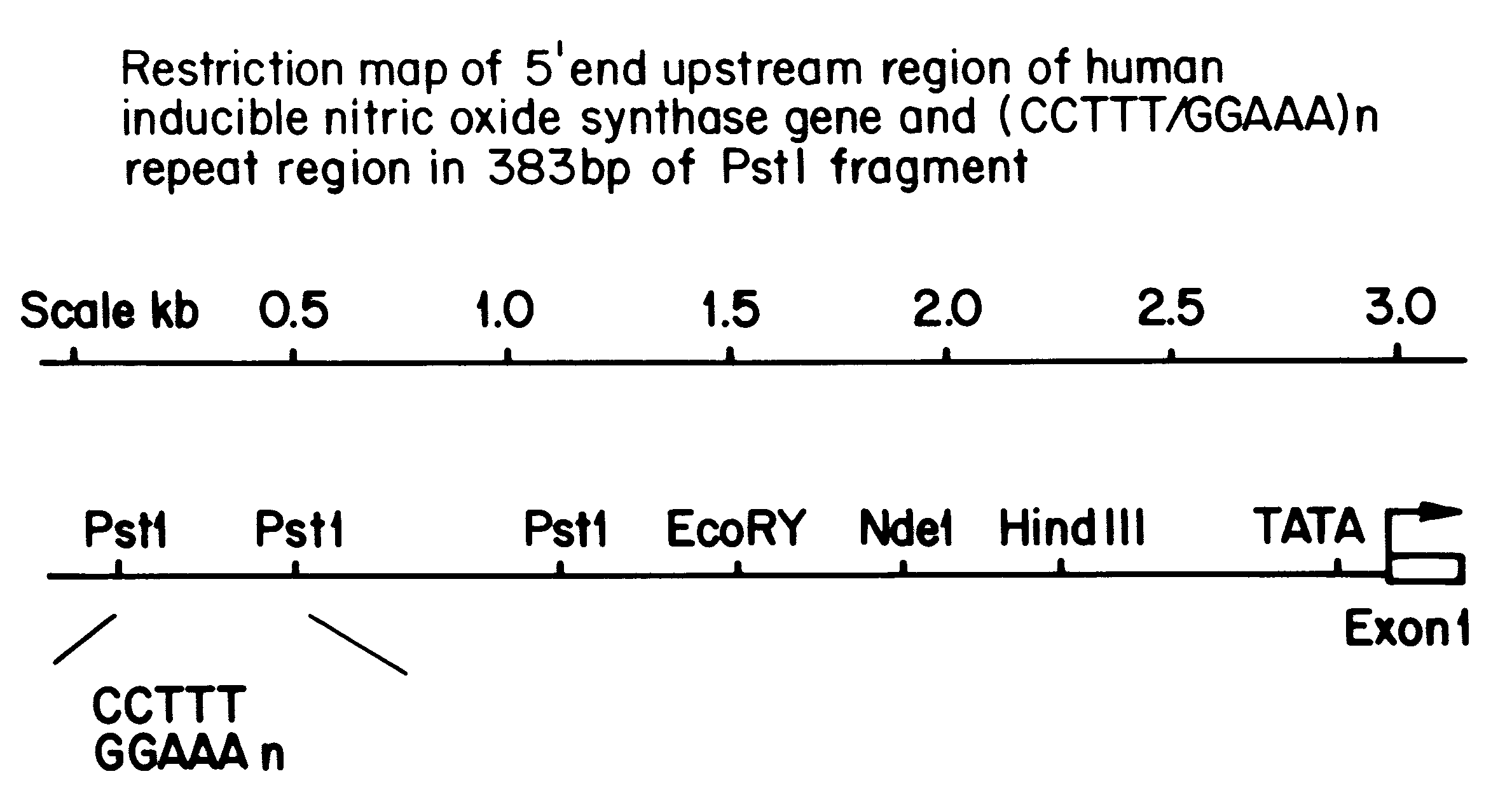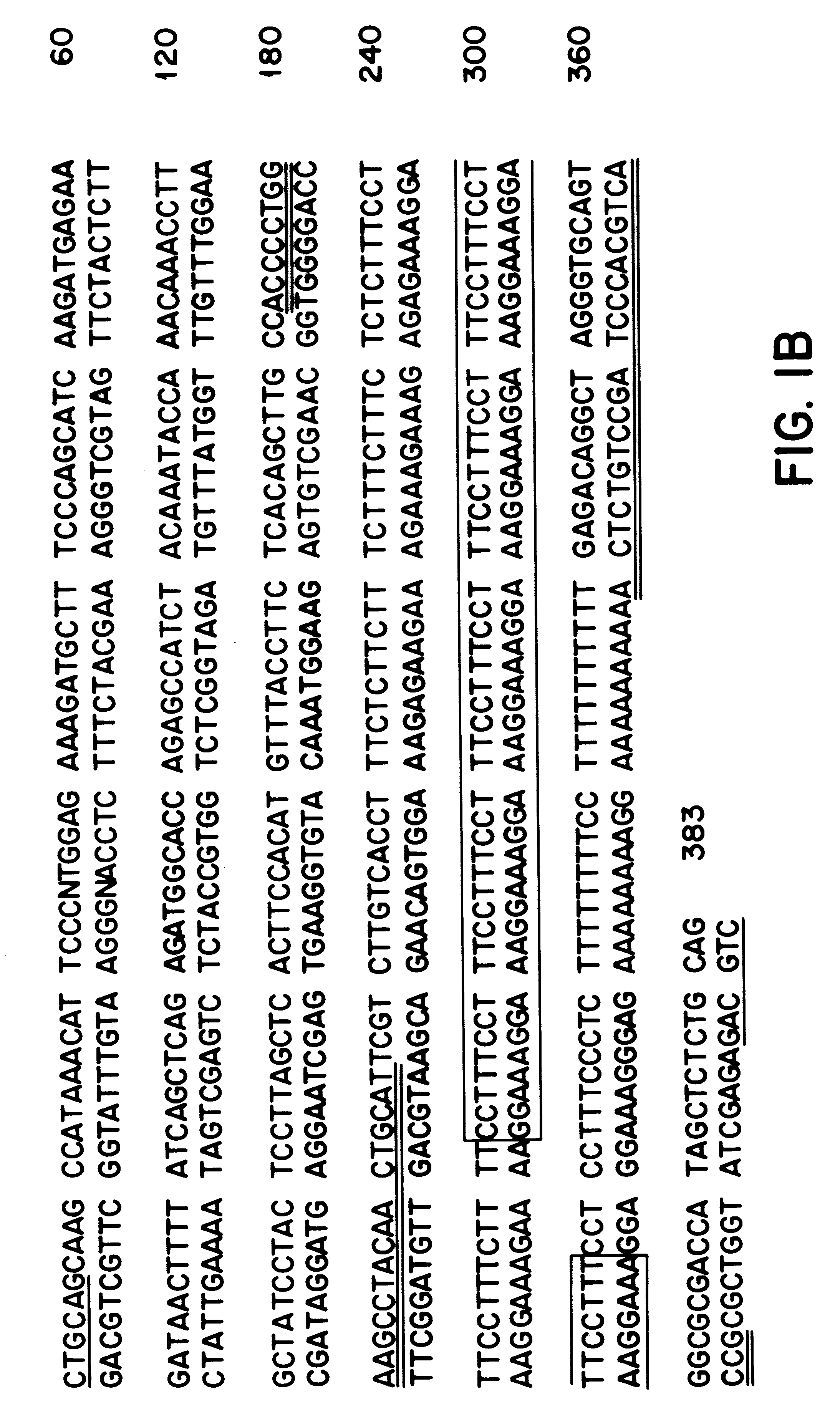Method of analyzing DNA using contiguous repeats
a technology of contiguous repeats and dna extraction, which is applied in the field of analyzing dna using contiguous repeats, can solve the problems of difficult interpretation, difficult to extract such large amounts of dna from many forensic samples such as blood and semen stains,
- Summary
- Abstract
- Description
- Claims
- Application Information
AI Technical Summary
Benefits of technology
Problems solved by technology
Method used
Image
Examples
example 2
A pair of specific oligonucleotide primers were designed to use the polymerase chain reaction (PCR) directly to amplify the polymorphic pentanucleotide repeat from the genomic DNA from a range of human DNA samples.
The DNA can be isolated from either blood or buccal cells of the saliva or any other biological sources which containing nuclei. The DNA extraction can be done in all cases using standard SDS-Proteinase K-Phenol procedure. (Sambrook, J., Fritsch, E. F. & Maniatis, T. (1989). Molecular cloning. Laboratory manual Cold Spring Harbor Laboratory Press, New York.)
A pair of flanking PCR primers designed to amplify the genomic DNA from human blood genomic DNA were as follow: The forward primer is 5'-ACCCCTGGAAGCCTACAACTGCAT-3' (Seq. ID No. 1). The reverse primer is 5'-GCCACTGCACCCTAGCCTGTCTCA-3' (Seq. ID No. 2). The primers are double underlined in FIG. 1B. The forward primer is 5' end labelled with fluorescent dye 6-carboxyfluorescein (6-Fam) (Oswel DNA Services, University of So...
example 3
Using the primers and techniques described in Example 2. DNA from 36 unrelated individuals was examined. The resulting electrophoretic gel is shown in FIG. 2. A series of (red) bands (not visible in the Figure) show internal DNA size markers (Genescan 2500, Rox), as indicated on the left of the Figure. The brighter (blue) bands across the middle of the gel are produced by 6-Fam fluorescently labelled primer A, and these show the presence of different repeat lengths, demonstrating polymorphism.
example 4
Data was obtained in a similar manner from 3 generations of a Caucasian (CEPH (Centre Etude Polymorpisme Humain) / Amish) family (pedigree 884). The results are shown in FIG. 3 in the form of a family tree and gel data showing Xu-1 allele data. The results are fully consistent and show Mendelian co-dominant inheritance. Other family groups have been similarly analysed and all show the same Mendelian co-dominant inheritance manner of this locus. for example, FIG. 4 shows the genotypes of four large CEPH families (pedigrees 884, 1424, 1341 and 1349).
PUM
| Property | Measurement | Unit |
|---|---|---|
| Crystal polymorphism | aaaaa | aaaaa |
Abstract
Description
Claims
Application Information
 Login to View More
Login to View More - R&D
- Intellectual Property
- Life Sciences
- Materials
- Tech Scout
- Unparalleled Data Quality
- Higher Quality Content
- 60% Fewer Hallucinations
Browse by: Latest US Patents, China's latest patents, Technical Efficacy Thesaurus, Application Domain, Technology Topic, Popular Technical Reports.
© 2025 PatSnap. All rights reserved.Legal|Privacy policy|Modern Slavery Act Transparency Statement|Sitemap|About US| Contact US: help@patsnap.com



